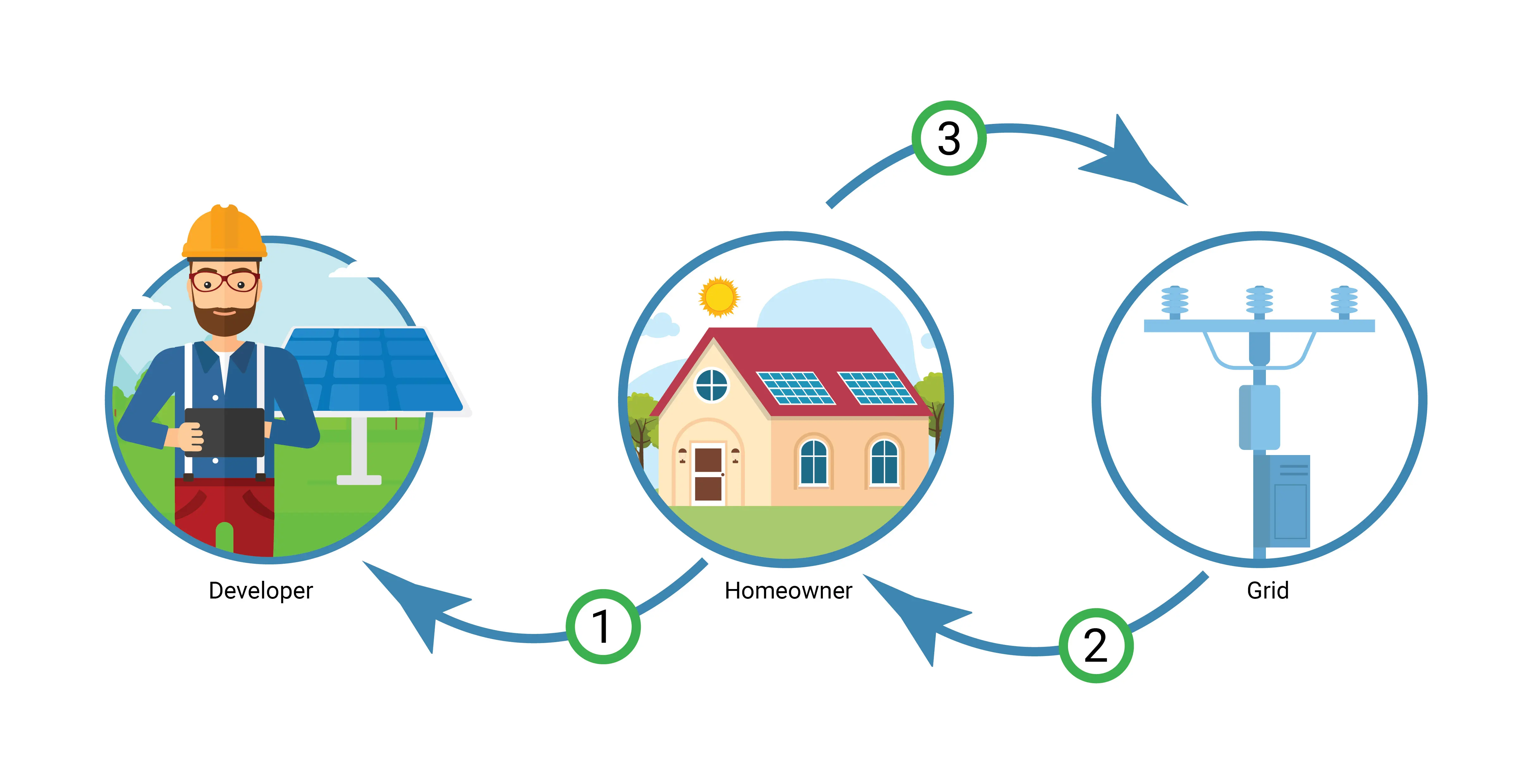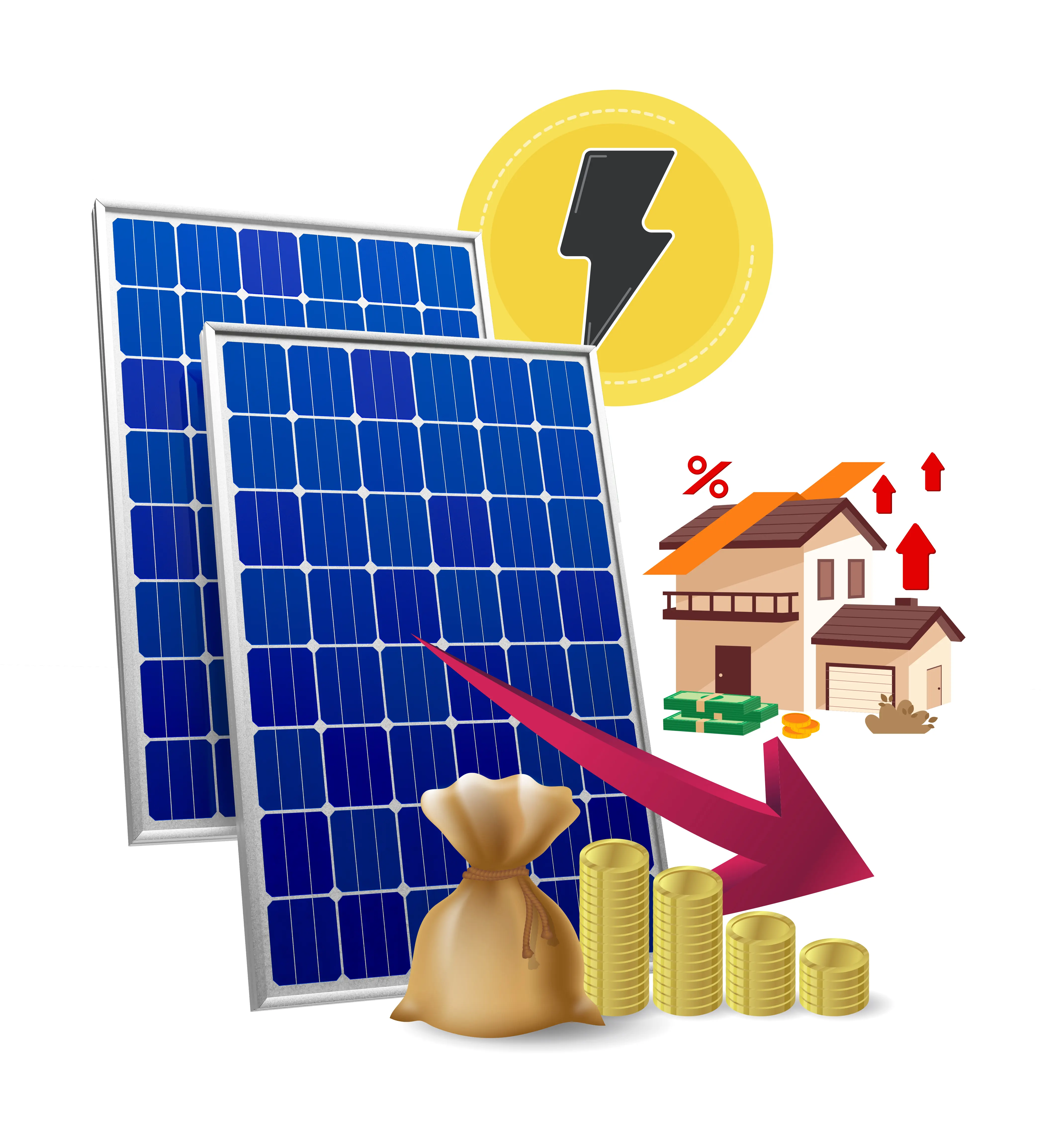Solar Power Purchase Agreements: A Comprehensive Guide
The saga of solar panel technology has been a remarkable journey of evolution since the 1950s. Initially, silicon-based solar panels were cumbersome and costly, limiting their use to specific applications like satellite power. However, advancements in material science have led to significant strides by solar module manufacturers, including those specializing in solar PV modules in India, transforming their utility and efficiency.
What is PPA?
A Power Purchase Agreement (PPA) is a long-term contract for buying clean energy at a set price from a specific source, established between a renewable energy developer and a consumer—typically a business with high electricity needs—or between a developer and a supplier who then redistributes the energy. Entering into a PPA signifies the transaction of a project along with its environmental benefits (such as Guarantees of Origin).

Understanding Solar Power Purchase Agreements (PPAs)

A Solar Power Purchase Agreement (PPA) is a financial arrangement that enables the deployment of solar energy with minimal barriers. Under a PPA, a renewable developer is responsible for the design, permitting, financing, and installation of a solar energy system on a customer’s property at little to no upfront cost. The power generated by this system is then sold to the host customer at a fixed rate, typically lower than the prevailing retail rates offered by local utilities. This arrangement not only facilitates immediate savings on electricity costs for the customer but also offers a revenue stream and potential tax benefits for the developer.

The Benefits of Solar PPAs
Solar PPAs offer numerous advantages to solar customers:
No or Low Upfront Capital Costs: The developer absorbs the initial investment required for the solar system, enabling customers to adopt solar energy without significant upfront expenses.
Reduced Energy Costs: Customers benefit from a fixed, predictable electricity cost over the term of the PPA, which is often structured to be competitive against rising utility prices.
Limited Risk: Operational and performance risks are shouldered by the developer, providing peace of mind to the customer.
Tax Credits Leverage: Developers can utilize tax credits more effectively than entities without taxable income, reducing overall system costs.
Potential Property Value Increase: Solar installations can enhance property values, with PPAs allowing for this investment at minimal cost.
Steps to Secure a Power Purchase Agreement (PPA)
Securing a Power Purchase Agreement (PPA) is essential for the success of an MW-scale power plant. Here's a guide on how to obtain a PPA:
Scouting for Locations : First, assess potential sites for photovoltaic (PV) installation, considering the amount of shade and available space. Both rooftop and ground locations are viable, with a rule of thumb being 5–10 watts (W) per square foot for solar projects.
Understanding Solar Policies : Since solar policies vary by region, identifying the specific policies applicable to your chosen location is crucial. The goal is to select a policy under which the PPA offers favorable financial returns.
Negotiating Contracts : Once a proposal is accepted, contract negotiations begin. This involves not just the PPA between the government entity and the system owner, but also agreements regarding land access for construction and maintenance, possibly including terms for Renewable Energy Certificates (RECs) sales.
Managing Permits and Rebates : The responsibility of applying for permits and rebates falls to the system owner, though government agencies need to monitor application deadlines. This is due to the time-sensitive nature of state incentives, which may involve limited application periods or competitive auctions.
Executing the Project : Following detailed design and planning, the developer will procure, install, and commission the solar PV system. This stage includes verifying utility connections and initiating system operation. It's crucial to adhere to the timelines set by state incentives to avoid forfeiting benefits, which could affect the contract's electricity pricing terms. PPAs outline the responsibilities of the developer and include mechanisms for imposing financial penalties in cases of non-compliance.
.webp)
Considerations and How to Enforce PPAs
While solar PPAs offer clear benefits, there are considerations and challenges in enforcement that need addressing:
SREC Ownership : Understanding who owns the solar renewable energy credits (SRECs) is crucial, as it affects the financial returns of the PPA.
Financing Options : Weighing the benefits of a PPA against outright purchasing is important for anyone considering solar.
Site Upgrades and Property Taxes : Customers might need to invest in site upgrades, and an increase in property value could lead to higher property taxes, depending on local policies.
Enforcement of PPAs requires a balanced approach, ensuring predictability and certainty for increased investments in clean energy. This includes fair compensation for discoms, standard bidding guidelines, detailed guidance on PPA exits, flexibility in power procurement, and strengthened judicial mechanisms for contract enforcement.
Types of PPAs
PPAs can be categorized based on the location of the energy generation:
On-site PPAs: These involve the installation of a photovoltaic plant on the customer's property, offering energy at a competitive price by offsetting demand from the grid.
Off-site PPAs: Associated with utility-scale renewable projects, these PPAs deliver energy from the point of generation to the consumption point via the electricity system's transmission or distribution network.
The Role of Solar PV Module Manufacturers in India
The success of solar PPAs in India is intricately linked to the ecosystem of solar pv module manufacturers, solar products manufacturers, and solar panel and module manufacturing companies. These entities play a critical role in ensuring the availability of high-quality, efficient solar components essential for the effective implementation of PPAs. By fostering advancements in solar technology and reducing costs through innovation, manufacturers contribute significantly to making solar PPAs more attractive and viable for a broader range of customers.

Alternative Financing Methods for Rooftop Solar Projects
In addition to Solar Power Purchase Agreements (PPAs), several alternative financing mechanisms exist for facilitating rooftop solar installations. These include:
- Direct purchase of a system with cash
- Securing a solar loan
- Opting for a solar lease
Before deciding on a solar PPA, it's crucial to evaluate these alternatives thoroughly. While the prospect of receiving free solar panels may appear enticing, exploring other financing methods could result in more substantial savings on your energy expenses over time. To ascertain the most beneficial financing option for your situation, it's advisable to solicit and compare multiple quotes from solar installation companies like PIXON Green Energy Private Limited .
Linking to the Future of Solar Energy
As we navigate the complexities and opportunities presented by solar PPAs, it's clear that collaboration among developers, customers, and manufacturers is key to unlocking the full potential of solar energy. Companies are at the forefront of this transition, offering cutting-edge solar solutions that support the growth and sustainability of solar energy in India and beyond.
In conclusion, solar power purchase agreements represent a critical tool in the global shift towards renewable energy. By understanding the nuances of PPAs, including their benefits, considerations, and the roles of various stakeholders, we can better navigate the path towards a sustainable energy future. With the continued support and innovation from solar pv module manufacturers in India and around the world, solar PPAs will undoubtedly remain a cornerstone of renewable energy strategy for years to come.